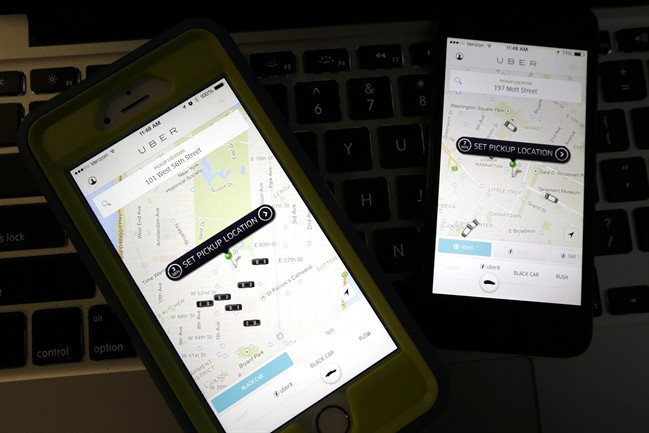If ride-hailing services like Uber or Lyft are your transportation service of choice this New Year’s Eve, you’ll likely be faced with surge pricing.

Ride-hailing services, and Uber in particular, have come under fire for surge pricing multiple times in the past, with many customers finding themselves with hundreds of dollars in transportation bills by the end of the night.
Here are some tips for starting the new year without racking up a huge transportation bill.
Avoid peak hours, or schedule a ride in advance
The easiest way for Uber and Lyft users to dodge increased prices and reduce their wait times for rides as they ring in the new year, is to wait until the busiest hours have passed.
According to an email sent to customers by Uber about planning transportation home after New Year’s Eve festivities, the highest-volume hours of the evening will likely be between 8 p.m. and 11 p.m., and between midnight and 3 a.m.
If you head out a little earlier and party a little later into the night, you might be able to avoid the worst of the increased fares.
In the interest of planning, riders can also take advantage of the ride-scheduling features Uber and Lyft both introduced a little over a year ago.
While Uber maintains that your fare is subject to the conditions at the time, Lyft locks your price in if you schedule a ride ahead of time. The company’s estimate does account for periods that are likely to be busy, but you aren’t subject to price hikes if the fares increase further. You can schedule a ride at least 30 minutes or up to seven days ahead of time using Lyft.

Get daily National news
Download a surge protector or a fare comparison app… or sign up to drive
In an attempt to combat surge pricing woes, several apps have been launched in the last few years that track increases of ride-hailing fares to help users avoid being taken off guard. One of the most well-known apps that provides this service is SurgeProtector.
The app has been profiled by several websites and has mixed reviews, but essentially works by tapping into Uber’s API and finds the nearest location that isn’t surging, according to a BuzzFeed report from 2014. While the app can’t actually reduce fares, it claims to locate the nearest location to you with lower surge pricing.
Other apps that function similarly are Cut the Surge, which is available for $2.79 in the App Store, the surge comparison app RideOut, or Surge. You may have to try out multiple apps to find the one that works for you, and that’s available in your location.
Depending on how dedicated you are to saving money on New Year’s, you could also sign up as a driver for either Uber or Lyft. By signing up and downloading the driver apps, you’ll get access to heat maps that depict areas with higher demand where fares are higher. It’s important to note that you’ll need to share a bit more of your personal information with either company if you decide to go this route.
Try a different location… or walk a few blocks and try again
A study completed in 2015 by researchers at Northeastern University revealed that by being patient, and moving beyond the surge zone, riders stood a pretty good chance of avoiding unreasonable fares. The researchers ran 43 versions of the Uber app pretending to be people looking for rides in various parts of each city, and found that surging areas change often.
The study found that there was a 60 per cent chance the price is not going to stay high for more than five minutes, Christo Wilson of the Northeastern Research team told BuzzFeed news.
“The easiest thing is just to wait,” said Wilson. “If it’s not rush hour – or last call, when all the bars close simultaneously – the rest of the time if you see a surge, it’s ephemeral. It will go away.”
And of course… you could always call a cab or take public transit
You could, of course, ditch the ride-hailing services all together in favour of public transit and taxi cabs. Several cities across Canada have introduced free public transit specifically for New Year’s Eve.
Across Ontario, GO Transit and UP Express routes will be free, and the TTC will provide free rides across Toronto. Winnipeg and Vancouver will also be waiving transit fares for the evening.
Taxi cabs have also launched several apps that provide an alternative to ride-hailing altogether, and prices are fixed. The Ride app is one example, which allows users to connect to nearby taxis and compare taxi cabs and transit options depending on which is closer to you.
If you have an iPhone, Beck Taxi has introduced its own app, which allows you to book a cab up to a month in advance, and promises upon downloading the app “No Surge Pricing. Ever.” Scout’s honour. Note that the app only has two stars in the App Store.




























Comments